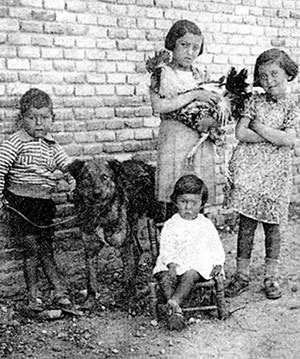New Media: Los Niños de Morelia, a work-in-progress by Destry Sibley ’09

Rosita Daroca Martinez was among the 467 “Niños de Morelia”—Spanish children who immigrated to the central Mexican city of Morelia thanks to the wartime efforts of Amalia Solórzano, wife of Mexico’s then-president, Lázaro Cárdenas. Now, with a Fulbright-National Geographic Digital Storytelling Fellowship, Sibley will expand on interviews already conducted with her grandmother. She’ll also tell the stories of other refugiados.
“If we don’t capture these stories now, very soon, they will be lost,” Sibley says. “And there are no materials about them in English at all.”
Sibley has done production work for WNYC’s Death, Sex & Money and Here’s The Thing podcasts, and for the independent podcasts Data Stories and Wonderland. This September she’ll receive an M.A. from the City University of New York, where she studied digital media through both data visualization and narrative nonfiction.
Sibley began the Niños de Morelia project in earnest this summer, interviewing surviving refugees, their descendants and scholars of the period. She’ll use those interviews to create a podcast and a multimedia website dedicated to the topic.
The children first experienced the trip as if they were going to summer camp, Sibley’s grandmother told her. “They thought they were only going to be in Mexico for a few months,” Sibley says. But when the Nationalist faction—led by Gen. Francisco Franco and backed by fascist Italy and Nazi Germany—prevailed in Spain, most of the children stayed in Morelia, where they lived their lives as refugees and exiles.
Siblings, separated by gender, were often prohibited from seeing one another. Sibley’s grandmother and her sisters eventually went to live in a convent. (A brother, deemed too sickly to make the trip out of Spain, remained behind and survived the war.)
Sibley’s project brings to mind the plight of refugee children today. “As a global community, we are confronting a refugee crisis of astronomical proportions,” she says. “What does it mean to be a child and have to be separated from your parents and your family, your home country, and to never be able to go back, and have your whole life stretched out ahead of you in a different country and in a different culture?”
Her aim, she says, is to use narrative techniques to create empathy, not only for the Niños de Morelia but for immigrants worldwide. “If we can see the humanity of these people and their stories,” she says, “then we can also think: Oh, every person being exiled from Syria, every refugee from Iraq or Afghanistan, has a story.”
Bill Sweet is a writer in the College’s communications office.
